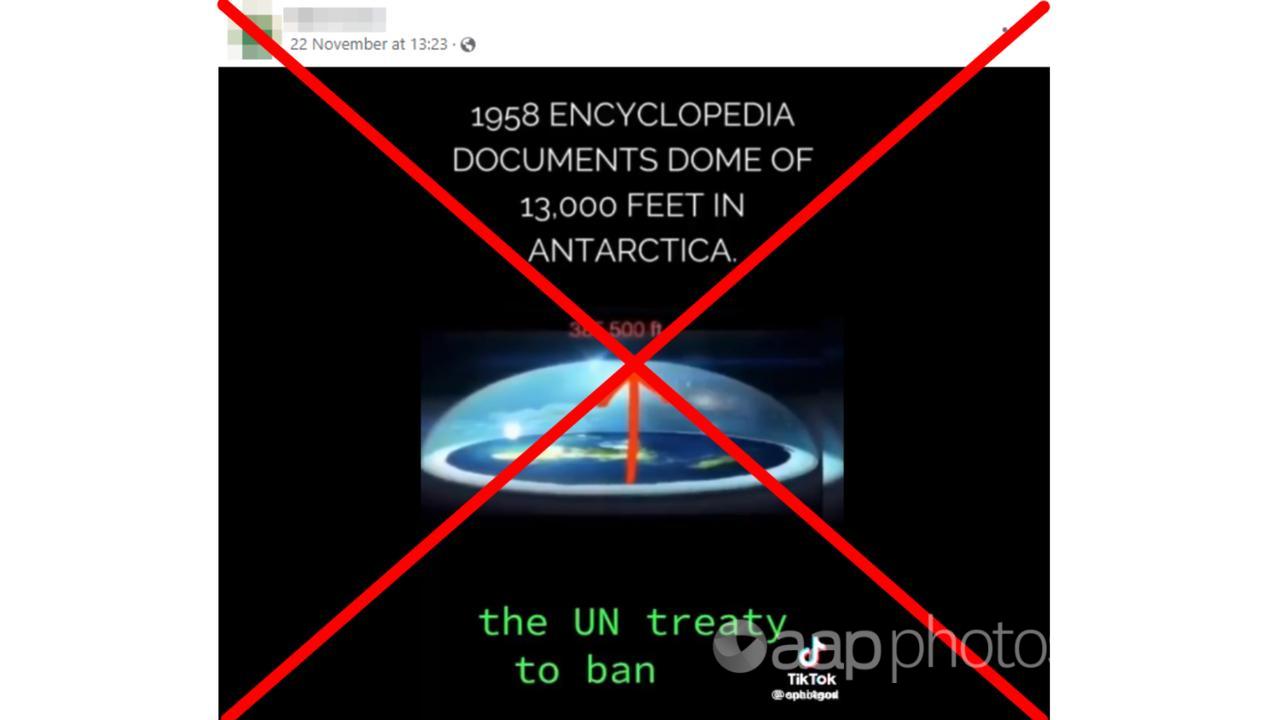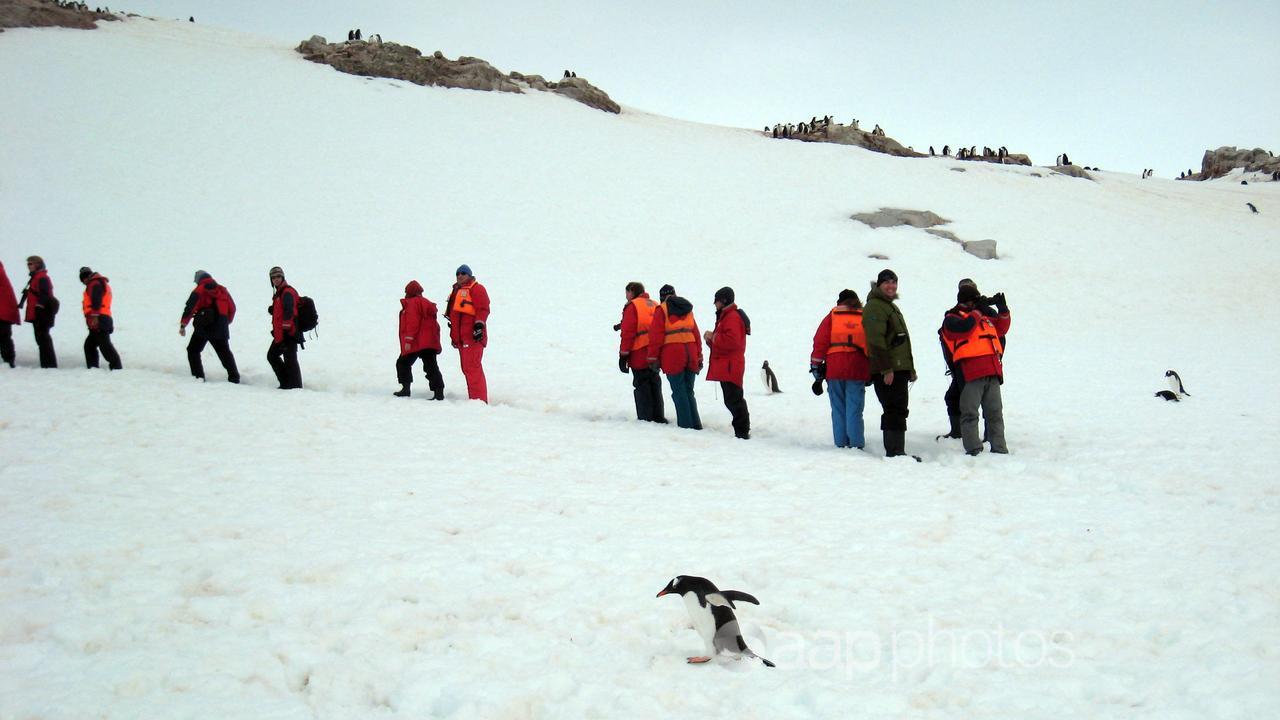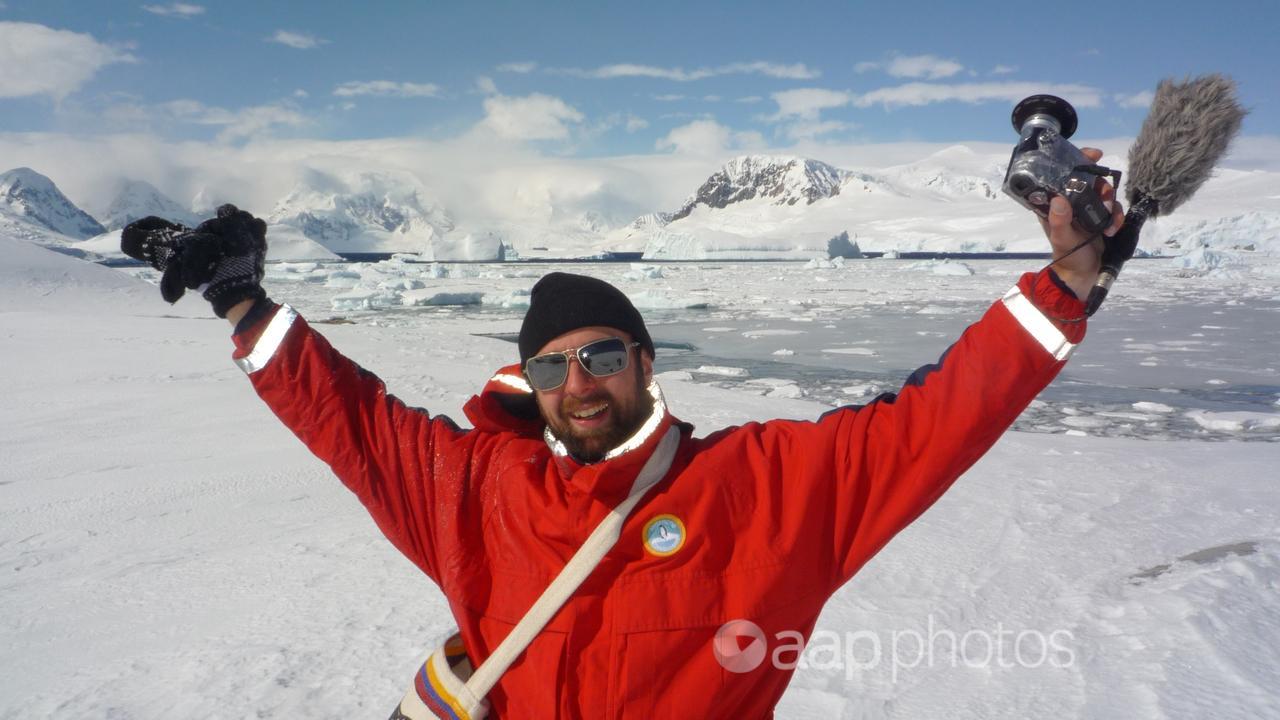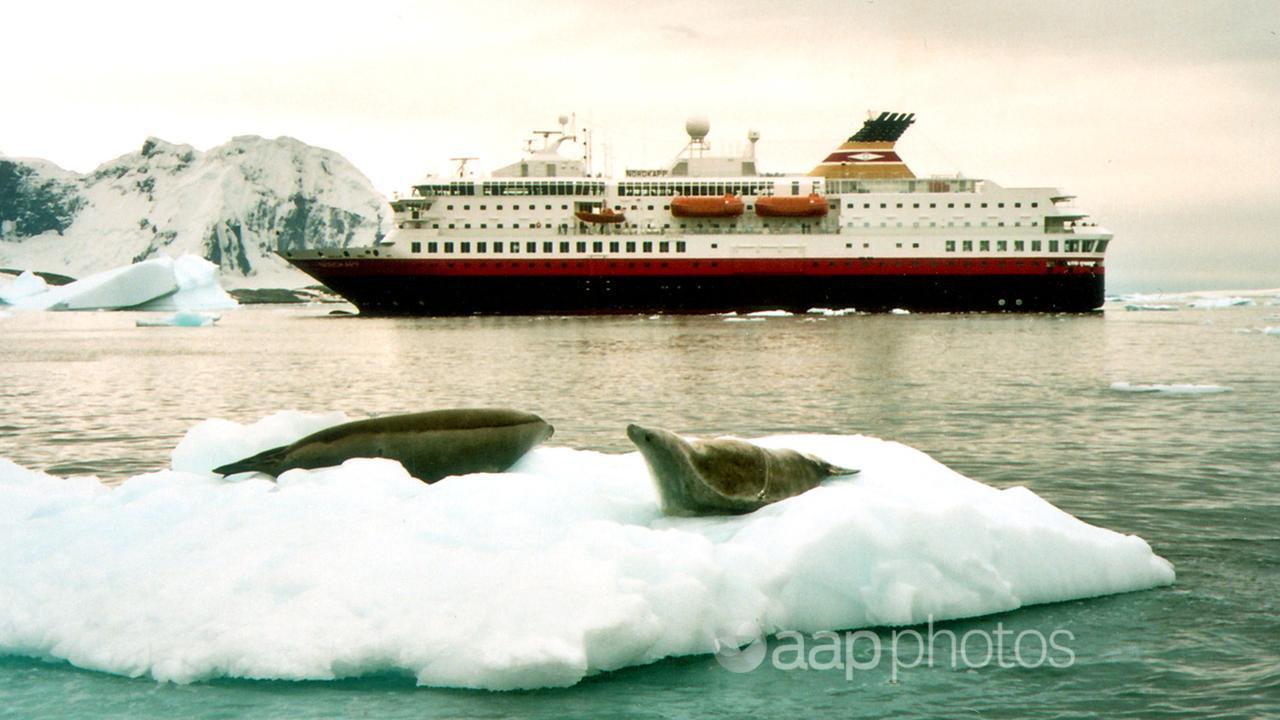A social media video claims The Antarctic Treaty of 1959 bans people from travelling to the icy continent, citing it as evidence world powers are covering up proof that the earth is flat.
This is false. Tourists regularly travel to Antarctica and it is accessible to anyone who can afford the organised cruises and flights to one of the most remote parts of the globe.
Experts told AAP FactCheck the claim is nonsense and Antarctica has a thriving tourism industry.
The video, which originated on TikTok and has more than 40,000 views on this Facebook post (screenshot here), features a man reading a description of Antarctica in an old encyclopedia.

“Why do all the maps before 1958 show a flat earth with the ice wall around it and a firmament, a dome, and why does the encyclopedia tell you that there’s a dome there and it gives you the exact height at the certain latitude and longitude?” the video’s narrator says (video mark 2min 20sec).
“Well the reason is because in 1958 that’s when all governments and all nations of the world signed the UN treaty to ban all civilians from going to the Antarctica.”
The narrator uses an edition of Encyclopedia Americana, which he incorrectly refers to as Encyclopedia Britannica, referencing “a dome 13,000-feet high”.
He claims the dome is the “firmament” that covers the earth, a common element of flat-earth conspiracies.
He then references The Antarctic Treaty, which he says was signed by “all governments and all nations of the world” to ban all civilians from going to Antarctica.
However, no travel ban exists and the “dome” the video references is likely Dome Argus, which matches the quoted height measurement.
The Antarctic Treaty was originally signed by 12 nations active in the continent at the time and has added 44 more nations since 1959.
It is chiefly concerned with establishing the continent as a nature preserve, guaranteeing international scientific co-operation and banning military action.

Experts told AAP FactCheck the treaty in no way bans civilian travel.
“Travel is not banned in the Antarctic Treaty. (The treaty) doesn’t even mention the word,” said Dr Daniel Bray, an expert on international relations at La Trobe University.
“In fact, travel is implicitly allowed for scientific purposes and inspections which are explicitly permissible activities under the treaty.”
Antarctic tourism is a bustling industry and more than 100,000 tourists travelled to the continent during the previous Southern Hemisphere summer.
Indi Hodgson-Johnston, an expert on Antarctic sovereignty at the University of Tasmania, said travel was carefully managed, but not banned, under the treaty.
“In fact, tourism in Antarctica is growing,” Dr Hodgson-Johnston told AAP FactCheck.
‘It’s largely managed by the International Association of Antarctica Tour Operators (IAATO) whose members (tour companies) follow strict guidelines to protect the environment.”

A number of regions in Antarctica are off-limits to civilians to protect some areas for environmental and scientific reasons, but these don’t cover the entire continent.
Associate Professor Jeffrey McGee, an expert on Antarctic governance at the University of Tasmania, also said the video’s travel ban claim was wrong.
“There is a thriving tourist industry in Antarctica, with over 100,000 people visiting each season, mainly around the Antarctic peninsula area,” Dr McGee told AAP FactCheck.
“There is also a lot of travel taking scientists and support staff to and from the various Antarctic research stations.”
Antarctic travel bans are a common motif in conspiracy theories. Other social media users have claimed Antarctica hides secret jungles and advanced civilisations.
The claim that the earth is flat has been debunked numerous times, examples here, here and here.
The Verdict
The claim The Antarctic Treaty bans civilian travel to Antarctica is false.
Experts told AAP FactCheck there is no ban and Antarctica has a thriving tourism industry.
The claim that the earth is flat has been debunked numerous times.
False — The claim is inaccurate.
AAP FactCheck is an accredited member of the International Fact-Checking Network. To keep up with our latest fact checks, follow us on Facebook, Twitter and Instagram.
All information, text and images included on the AAP Websites is for personal use only and may not be re-written, copied, re-sold or re-distributed, framed, linked, shared onto social media or otherwise used whether for compensation of any kind or not, unless you have the prior written permission of AAP. For more information, please refer to our standard terms and conditions.


















